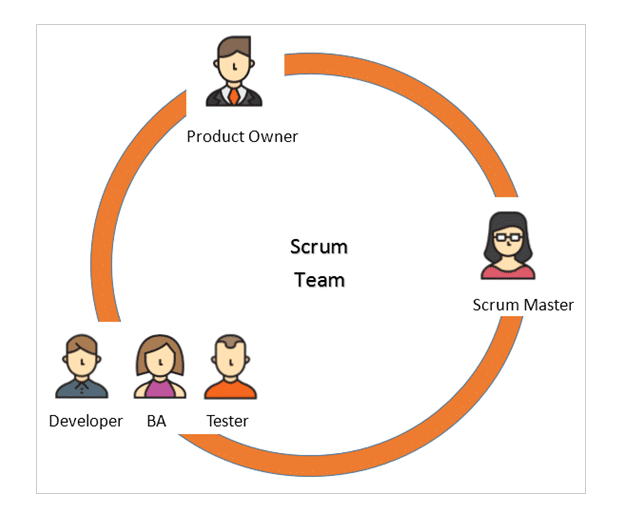Agile Teams
What is an Agile Team?
An Agile Team is a small, cross-functional group of professionals who work collaboratively to deliver high-quality products or services in an iterative and incremental manner. These teams are self-organizing, meaning they have the autonomy to decide how best to accomplish their work without relying on external direction.
Example:
Imagine a software company, SLSI Corp, developing a new mobile application. An Agile team at SLSI Corp might consist of developers, testers, designers, and a product owner, all working together to deliver features in short cycles, adapting to feedback and changes rapidly.
Key Characteristics of Agile Teams
- Self-Organizing:
- Agile teams manage their own workload and processes, determining the best way to achieve their goals.
- They don't rely on a traditional hierarchical structure; instead, they collaborate to make decisions collectively.
- This autonomy fosters ownership and accountability among team members.
- Cross-Functional:
- Each team possesses all the necessary skills to deliver a product increment, eliminating dependencies on external groups.
- For instance, a team might include developers, testers, and UX designers, ensuring all aspects of development are covered.
- This diversity enhances collaboration and speeds up delivery.
- Co-Located:
- Ideally, Agile teams work in the same physical space to facilitate quick communication and collaboration.
- However, with modern tools, distributed teams can also maintain effective communication.
- Regular interactions help in building trust and understanding among team members.
- Dedicated:
- Team members are fully committed to one project, allowing them to focus and reduce context switching.
- This dedication leads to increased productivity and a deeper understanding of the project.
- It also fosters a sense of responsibility and ownership over the product.
- Long-Lived:
- Agile teams are stable and work together over extended periods, enhancing team cohesion..
- Long-lived teams develop better communication patterns and a shared understanding of goals.
- This stability contributes to continuous improvement and higher performance.
Roles within an Agile Team

- Product Owner:
- Represents the stakeholders and is responsible for maximizing the value of the product.
- Manages the product backlog, prioritizing features based on business value and customer needs.
- Ensures the team understands the requirements and the desired outcomes.
- Scrum Master:
- Acts as a facilitator and coach for the team, ensuring Agile principles are followed.
- Removes impediments that may interrupt the team's progress.
- Helps the team improve its processes and fosters a collaborative environment.
- Development Team:
- Consists of professionals who work together to deliver a potentially releasable product increment at the end of each sprint.
- Team members may have various skills, including coding, testing, and designing.
- They are collectively responsible for delivering the product increment.
- Writes automated and manual tests.
- Works closely with customers to create acceptance tests.
- The Business Analyst (BA) plays a bridge role between the customer (or product owner) and the development team.
- Gathers and clarifies business needs from stakeholders.
- Helps break down high-level features into detailed user stories with clear acceptance criteria.
- Ensures smooth communication between business and technical teams.
Benefits of Agile Teams
- Enhanced Collaboration: Small, tightly-knit teams promote better communication and teamwork.
- Increased Flexibility: Teams can quickly adapt to changes in requirements or priorities.
- Faster Delivery: Iterative development allows for quicker releases and feedback incorporation.
- Higher Quality: Continuous testing and integration lead to more reliable products.
